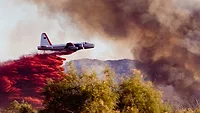Weekly Hands-on How-To powered by KnowHow
How To Apply Fire Cleaning Principles: The Chemistry of Smoke and Soot Removal

Remember those days back in chemistry class when you’d mix a couple of things together, and suddenly, something new and unexpected would bubble up? Well, cleaning fire residue is kind of like that—only instead of a controlled lab experiment, you’re dealing with a chaotic mess of smoke, soot, and debris left behind after a fire.
Understanding the chemistry behind smoke and soot removal is crucial for any restorer. You’ve got to know the right methods and products to break down stubborn residues at a molecular level, and it’s not just about applying some elbow grease. In this weekly how-to, powered by KnowHow, we’ll dive into these essential fire-cleaning principles and explore the science behind each step, equipping you to handle even the toughest cleanup jobs.
So grab your lab goggles, and let’s break down the chemistry of fire restoration and show you how to transform any soot-stained surface back to its pre-loss condition.
Note: This Weekly Hands-On How-To is based on this template in KnowHow’s template library.
Step 1: Solvent Action
Not all cleaning solutions are created equally when it comes to removing smoke residues. Most water-based cleaning products used in fire mitigation are alkaline (pH 7-14), as smoke residues are typically acidic. The letters “pH” stand for the potential of hydrogen, and pH measures the concentration of hydrogen atoms in a given solution. The higher the pH level, the more aggressive the cleaner will be at breaking down these residues.
Because smoke residues often contain oily substances, a solvent is required to dissolve them for effective removal. Water, often called the "universal solvent," works well for most residues, but organic solvents are needed for greasy, oily, or waxy substances. Choosing the right solvent for the job is crucial to ensure effective cleaning without damaging the surface beneath.
Step 2: Chemical Reaction
In some cases, cleaning requires more than just dissolving residues; it demands a chemical reaction. The chemicals within a cleaning product interact with the contaminant (soot or ash) to form a new substance that can be easily wiped away.
For example, rust—an oxidized metallic residue—reacts with acidic cleaning products to create a compound that can be washed away effortlessly. Understanding these reactions allows you to choose the right product to neutralize and remove stubborn residues without unnecessary scrubbing or potential surface damage.

Step 3: Lubrication
Lubrication reduces friction between the surface and the smoke residue. Imagine trying to remove a sticky residue without scratching the surface underneath. That’s where lubrication becomes your best friend, making it easier to wipe away contaminants gently and easily.
For instance, using vegetable oil soap on finished wood surfaces helps to loosen and lift the smoke residue without harming the wood. This technique is especially useful on delicate surfaces that water, harsh chemicals, or a stiff-bristled brush might damage. It’s all about preserving the integrity of the material while effectively removing the contaminants.
Step 4: Agitation
Sometimes, a little elbow grease is still necessary to get the job done. Agitation involves using physical force to suspend, or dislodge soot and smoke residues so they can be easily removed. Depending on the level of contamination and the type of surface, the tools used can vary from a soft terrycloth towel to a stiff-bristled brush.
A more vigorous approach may be required for surfaces with heavy soot accumulation. However, always be mindful of the material you’re cleaning—too much force on a delicate surface can do more harm than good.

Step 5: Temperature
If you’re cleaning up soot, it's clear that the property has already had its fair share of heat; however, increasing the temperature is a powerful method for cleaning stubborn residues. Cleaning with higher temperatures accelerates chemical reactions, opens pores in the material, and helps speed up the drying process.
For example, using warm water in your cleaning solution can help quickly break down oily residues. But remember to check the surface’s tolerance for heat first—some materials can be damaged or warped by high temperatures, so proceed with caution.
Step 6: Dwell Time
Patience is a virtue in the cleaning process. The term “Dwell time” refers to the amount of time a cleaning agent remains in contact, or “sits on” a contaminated surface before being removed. This allows the cleaning agent’s chemicals to fully interact with the residue, and break it down effectively.
Each product will have specific instructions regarding dwell time, so make sure to read the labels and follow the manufacturer’s recommendations. Too short, and the cleaner won’t be effective; too long, and you might risk damaging the surface or leaving unwanted residues.
Conclusion
Class wasn’t so bad this time, right? Understanding the chemistry behind fire cleaning is a powerful tool in your restoration arsenal. But, no matter how experienced you are, keeping track of how every chemical and cleaning technique interacts with fire damage residue is a tall order.
With KnowHow, you don’t need to be a walking chemistry textbook. Our desktop and mobile platform provides step-by-step guidance and instant access to answers in the field, right when your crews need it. Whether it’s understanding the right solvent to break down oily soot or remembering the perfect dwell time for a product, KnowHow keeps all of your company specific information at your team’s fingertips
Learn more about how KnowHow can simplify the fire restoration process and help restorers tackle each job with confidence. Visit tryknowhow.com today.
Looking for a reprint of this article?
From high-res PDFs to custom plaques, order your copy today!








